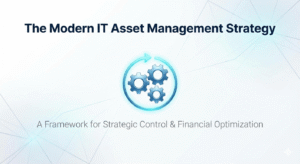A company data breach leads to all kinds of problems. Here’s one of the worst. Cybercriminals see your customers’ personal information. As a result, those consumers become vulnerable to identity theft, credit card fraud and other crimes.
A second major issue—and one you’ll feel, personally—is that your business’s reputation takes a hit. Once the breach is public knowledge, you might have a hard time getting customers to trust you ever again.
Lost trust, lost revenue
According to the Ponemon Institute, an independent research agency, public companies lose an average of 5 percent of their market share in the 90 days after revealing a data breach.
Plus, after learning of a data breach, 65 percent of consumers feel they can no longer trust the company that was attacked. And 31 percent would refuse to do business with it in the future.
For most companies, this loss of faith means a serious loss of dollars—maybe hundreds of millions of dollars. Consider what happened when the credit reporting company Equifax announced a breach in 2017.
Its shares dropped a staggering 13.2 percent in one day.
Here’s another sobering statistic. When a breach exposes at least 60 percent of a company’s total data, that organization is likely to go out of business after approximately six months.
Even if a company manages to stay afloat, the long-term effects of reputational damage can be severe.
Comparitech, another consumer research organization, looked at a number of companies that experienced data breaches. Before getting breached, their stock prices grew an average of 45.6 percent in three years. After the breach, their stock prices increased by an average of 14.8 percent over three years, a remarkable decline in growth rate.
Prevention: always the best medicine
The good news here is that you can find trusted experts in the Orange County area who can shore up your cyber-defenses. You’ll protect your data and, by doing so, safeguard the trust your customers have placed in you.
Your customized cybersecurity plan should have several crucial elements.
Security & risk assessment
You need a top-to-bottom audit of your hardware and software. Yes, you. It doesn’t matter how small your operation is or how confident you are that you’re safe. You almost certainly have hardware and software that needs to be patched and updated.
Real-time monitoring
Real-time monitoring can catch a lot of issues, like potential breaches, before they have a chance to affect your infrastructure.
Employee training
All of your employees should undergo training that will teach them the latest security measures and safe habits. That way, they won’t fall prey to phishing schemes and other breaching ploys.
Disaster recovery communication plans
Your communication plan is just one element of a complete disaster recovery plan. You don’t want to have to figure out how to keep in touch with your staff and customers in the middle of a disaster. You need a clear plan for how you’ll handle everything from continued operations to press releases before disaster strikes.
Protect your rep
Your business reputation may be an intangible thing, but it’s real. It can make or break your whole business.
You can’t afford to roll the dice with this. Get out in front of a reputation-ruining event by being proactive.
is-your-network-security-strong-enough-to-protect-your-reputation





